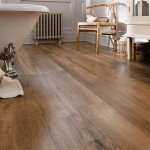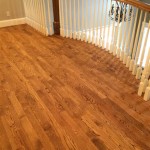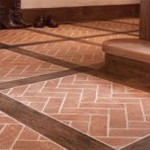Restaining Oak Hardwood Floors: A Comprehensive Guide
Oak hardwood floors are a popular choice for homeowners due to their durability, timeless aesthetic, and ability to be refinished. One of the key benefits of hardwood floors is the option to change their color through restaining, allowing a homeowner to update the look of their home without completely replacing the flooring. This process, however, requires careful planning, preparation, and execution to achieve optimal results. This article provides a comprehensive guide to restaining oak hardwood floors, covering everything from assessing the existing floor to applying the final coat of finish.
Before embarking on the restaining process, it is crucial to understand the specific type of oak flooring installed. There are primarily two types: red oak and white oak. Red oak has a pinkish undertone and a more open grain pattern, while white oak has a more neutral, grayish-brown tone and a tighter grain pattern. The type of oak will influence the final color achieved with the stain and the amount of stain the wood absorbs. Identifying the existing finish is also essential. Surface finishes, such as polyurethane, sit atop the wood, while penetrating finishes, such as oil-based finishes, soak into the wood. Knowing the existing finish will impact the sanding process.
Assessing the Existing Oak Floor and Planning the Project
The initial step in restaining oak hardwood floors involves a thorough assessment of the existing floor's condition. Look for signs of damage such as scratches, dents, gouges, water damage, and warping. Minor scratches and dents can typically be sanded out, while more significant damage may require professional repair or even board replacement. Replacing damaged boards before staining ensures a uniform finished product. It is also important to identify any areas of discoloration or uneven wear, as these areas may require more intensive sanding.
Planning the project involves selecting the desired stain color and finish. Consider the overall aesthetic of the room and the desired level of durability. Lighter stains can brighten a room and highlight the natural grain of the oak, while darker stains can add warmth and sophistication. It is highly recommended to test stain colors in an inconspicuous area or on spare pieces of oak flooring to ensure the color meets expectations. The choice of finish, whether it is polyurethane, water-based, or oil-based, will affect the floor's durability, appearance, and ease of maintenance. Polyurethane is known for its durability and moisture resistance, while water-based finishes are low in VOCs and dry quickly. Oil-based finishes offer a warm, amber tone but can yellow over time.
Gathering the necessary tools and materials is an essential step in planning. This includes a drum sander (available for rent from most home improvement stores), edge sander, orbital sander, sandpaper in various grits (typically 36, 60, 80, 100, and 120 grit), a vacuum cleaner, tack cloths, drop cloths, a stain applicator (such as a brush, roller, or lambswool applicator), stain, finish, and personal protective equipment (PPE) such as a respirator, safety glasses, and gloves.
Preparing the Oak Floor for Staining
Proper preparation is crucial for achieving a professional-looking stain. This begins with removing all furniture and accessories from the room. Cover any remaining fixtures, such as baseboards and door frames, with painter's tape and drop cloths to protect them from dust and stain. Thoroughly clean the floor with a vacuum cleaner to remove any loose debris, dirt, and dust. A thorough cleaning ensures that the sanding process is effective and that the stain adheres properly to the wood.
Sanding is the most labor-intensive part of the restaining process, but it is essential for removing the existing finish and creating a smooth, even surface for the stain. Begin with a coarse grit sandpaper (36 or 40 grit) in the drum sander to remove the old finish. Sand in the direction of the wood grain, overlapping each pass slightly to avoid leaving lines. Take caution and keep the sander moving to prevent gouging the floor. Follow the sanding with progressively finer grits (60, 80, 100, and 120 grit), sanding in the same direction each time. Use the edge sander to sand along the edges of the room and in corners, where the drum sander cannot reach. An orbital sander can be used for detail work and to blend the edges sanded with the edge sander into the rest of the floor.
After each sanding pass, thoroughly vacuum the floor to remove all sanding dust. Between each grit, going over the floor with a tack cloth is recommended to remove any remaining fine dust particles. Sanding dust left on the floor can interfere with the stain's penetration and result in an uneven finish. Once the floor has been sanded and vacuumed, inspect it carefully for any remaining imperfections. Touch up any areas that need additional sanding before proceeding to the next step.
Water popping is an optional step that can enhance the grain of the oak and allow the stain to penetrate more evenly. This involves lightly dampening the floor with a clean mop or sponge. As the water evaporates, it raises the grain of the wood, creating a more receptive surface for the stain. Allow the floor to dry completely before applying the stain. Water popping is particularly beneficial for oak floors with a tight grain or when using a dark stain.
Applying the Stain and Finish
Before applying the stain, it is important to stir it thoroughly to ensure that the pigments are evenly distributed. Apply the stain evenly in the direction of the wood grain, using a brush, roller, or lambswool applicator. Work in small sections to ensure that the stain is applied consistently. Avoid applying too much stain, as this can result in an uneven finish or a sticky residue. After applying the stain, allow it to penetrate the wood for the recommended amount of time, as specified by the stain manufacturer. The longer the stain sits on the surface, the darker the color will be.
Once the stain has penetrated the wood, wipe off any excess stain with a clean, lint-free cloth. Wipe in the direction of the wood grain to avoid streaking. Be thorough in removing the excess stain to prevent the finish from drying unevenly. Allow the stain to dry completely before applying the finish. The drying time will vary depending on the type of stain and the ambient conditions.
After the stain is completely dry apply the chosen finish. Apply the first coat of finish according to the manufacturer's instructions. Use a high-quality brush or roller designed for the type of finish being used. Apply the finish in thin, even coats, working in the direction of the wood grain. Avoid applying too much finish, as this can result in drips, runs, or bubbles. Allow the first coat of finish to dry completely before applying the second coat. Lightly sand the floor with a fine-grit sandpaper (220 grit) between coats to smooth out any imperfections and improve adhesion. Vacuum and tack the floor before applying the next coat. Repeat this process for a total of two or three coats of finish.
The final stage involves allowing the finish to cure completely before placing furniture back in the room or walking on the floor. The curing time will vary depending on the type of finish and the ambient conditions. Follow the manufacturer's recommendations for curing time. Once the finish has cured, carefully place furniture back in the room, using felt pads under the legs to protect the floor from scratches. With proper care and maintenance, a newly restained oak hardwood floor can provide years of beauty and enjoyment.

Refinish Red Oak Flooring How To Make It Like White Arched Manor

How We Refinished Our 100 Year Old White Oak Flooring Cassie Jean

Chicago Hardwood Install

Refinishing Dated Hardwood Floors Transformation From Start To Finish

Hardwood Floor Refinishing Loudoun Valley Floors

How We Refinished Our 100 Year Old White Oak Flooring Cassie Jean

Refinishing Old Thin Hardwood Floors Lemon Thistle

Floor Refinishing Services N Hance

Hardwood Floor Refinishing Ub Hardwoods Plymouth Mn

How Long Does It Take To Refinish Hardwood Floors Refinishing Guide Reallyfloors America S Est Flooring
Related Posts








